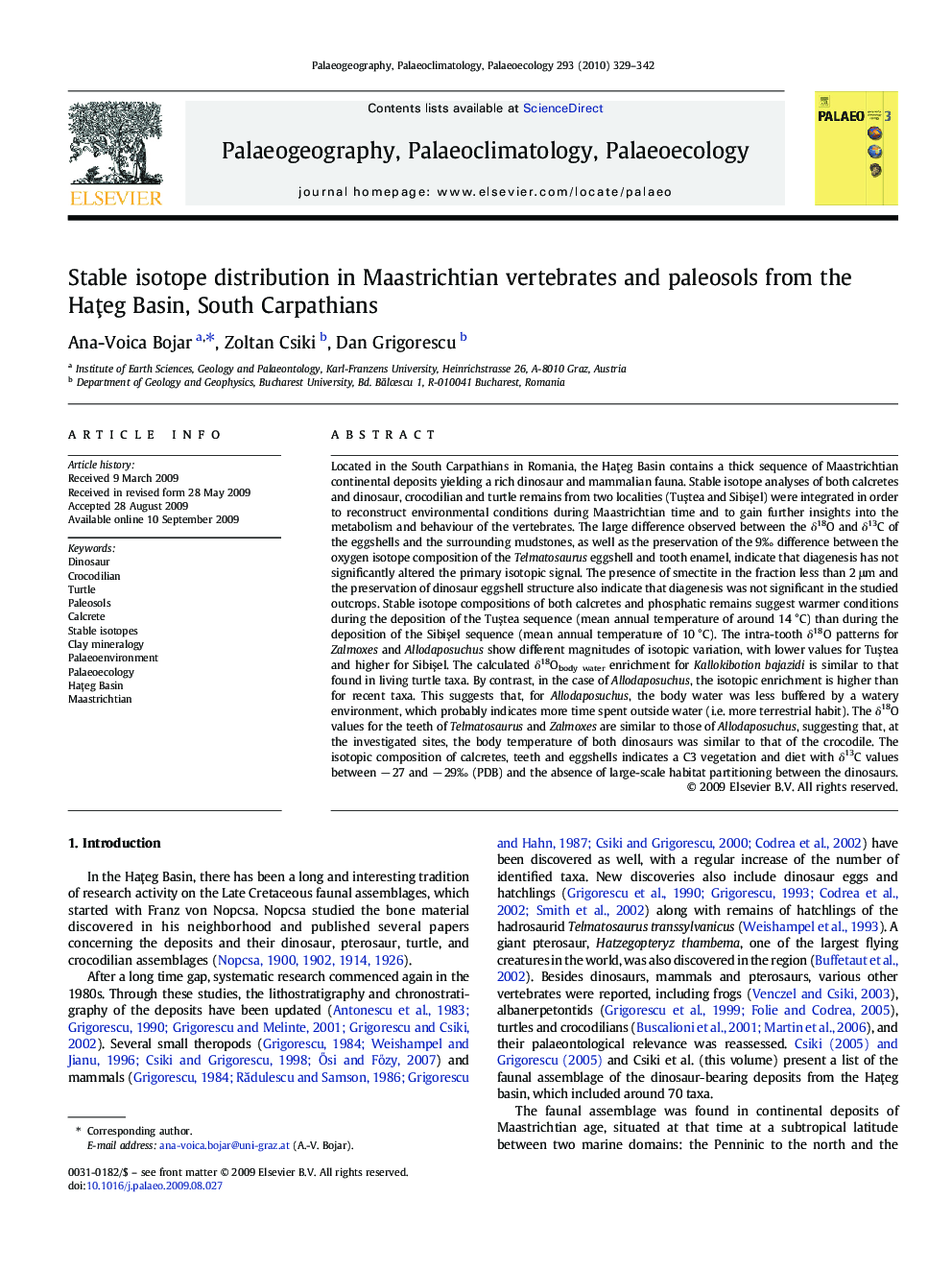| کد مقاله | کد نشریه | سال انتشار | مقاله انگلیسی | نسخه تمام متن |
|---|---|---|---|---|
| 4467727 | 1622275 | 2010 | 14 صفحه PDF | دانلود رایگان |

Located in the South Carpathians in Romania, the Haţeg Basin contains a thick sequence of Maastrichtian continental deposits yielding a rich dinosaur and mammalian fauna. Stable isotope analyses of both calcretes and dinosaur, crocodilian and turtle remains from two localities (Tuştea and Sibişel) were integrated in order to reconstruct environmental conditions during Maastrichtian time and to gain further insights into the metabolism and behaviour of the vertebrates. The large difference observed between the δ18O and δ13C of the eggshells and the surrounding mudstones, as well as the preservation of the 9‰ difference between the oxygen isotope composition of the Telmatosaurus eggshell and tooth enamel, indicate that diagenesis has not significantly altered the primary isotopic signal. The presence of smectite in the fraction less than 2 μm and the preservation of dinosaur eggshell structure also indicate that diagenesis was not significant in the studied outcrops. Stable isotope compositions of both calcretes and phosphatic remains suggest warmer conditions during the deposition of the Tuştea sequence (mean annual temperature of around 14 °C) than during the deposition of the Sibişel sequence (mean annual temperature of 10 °C). The intra-tooth δ18O patterns for Zalmoxes and Allodaposuchus show different magnitudes of isotopic variation, with lower values for Tuştea and higher for Sibişel. The calculated δ18Obody water enrichment for Kallokibotion bajazidi is similar to that found in living turtle taxa. By contrast, in the case of Allodaposuchus, the isotopic enrichment is higher than for recent taxa. This suggests that, for Allodaposuchus, the body water was less buffered by a watery environment, which probably indicates more time spent outside water (i.e. more terrestrial habit). The δ18O values for the teeth of Telmatosaurus and Zalmoxes are similar to those of Allodaposuchus, suggesting that, at the investigated sites, the body temperature of both dinosaurs was similar to that of the crocodile. The isotopic composition of calcretes, teeth and eggshells indicates a C3 vegetation and diet with δ13C values between − 27 and − 29‰ (PDB) and the absence of large-scale habitat partitioning between the dinosaurs.
Journal: Palaeogeography, Palaeoclimatology, Palaeoecology - Volume 293, Issues 3–4, 15 July 2010, Pages 329–342